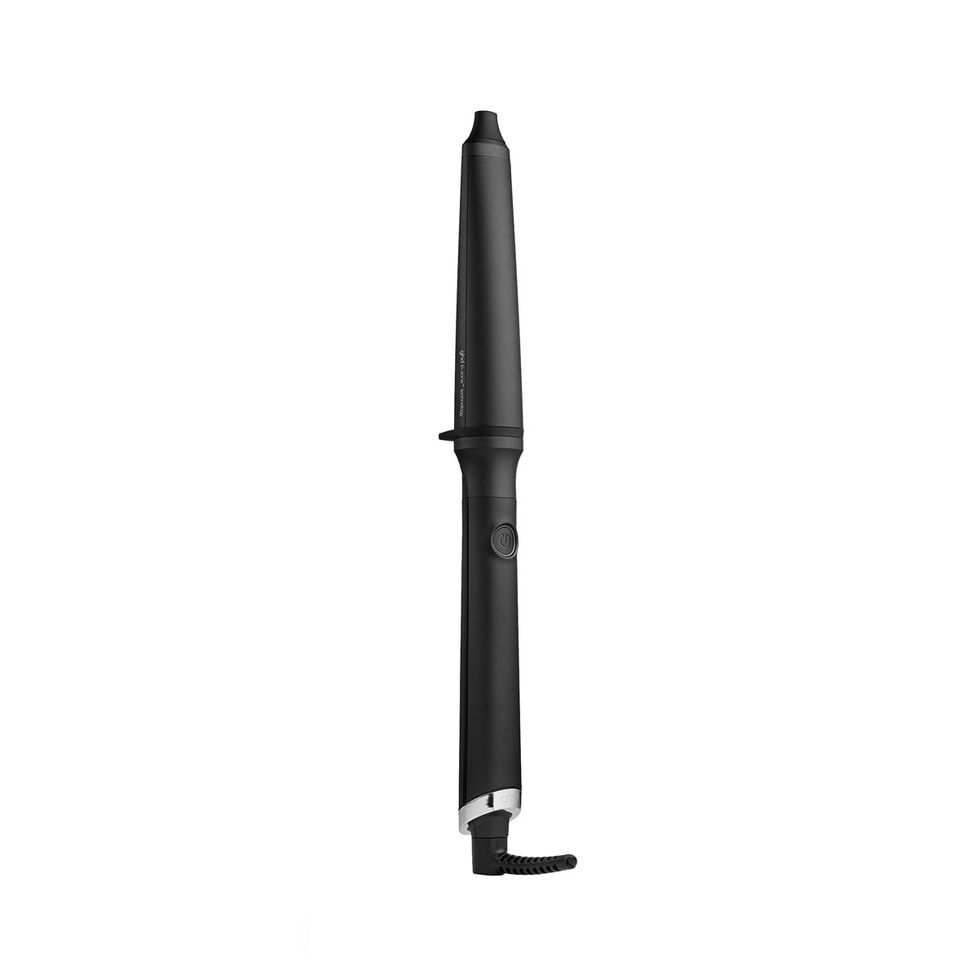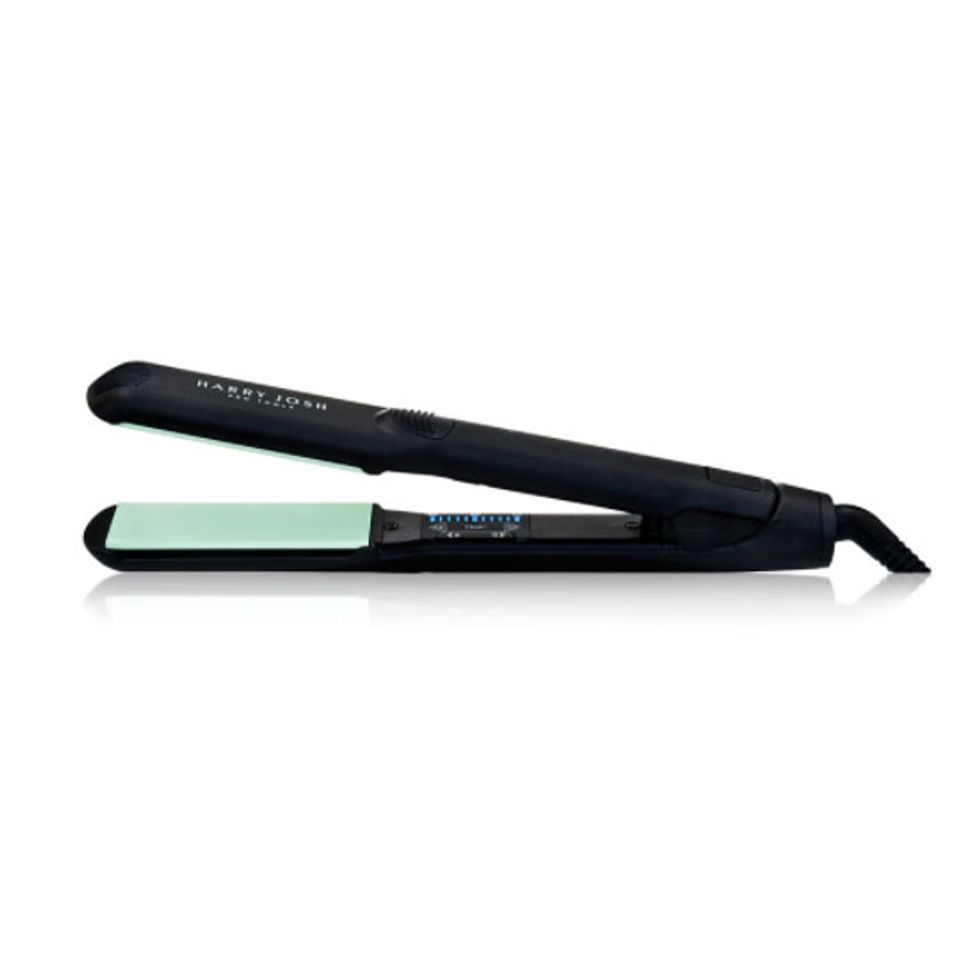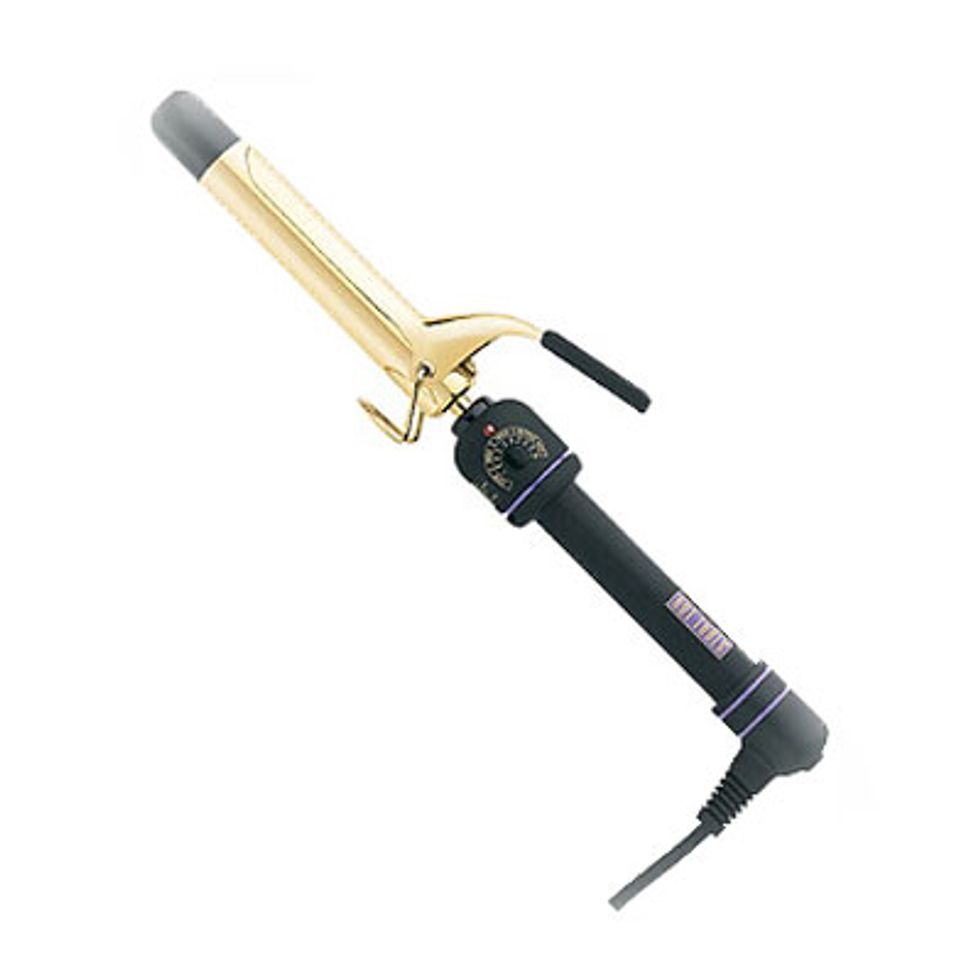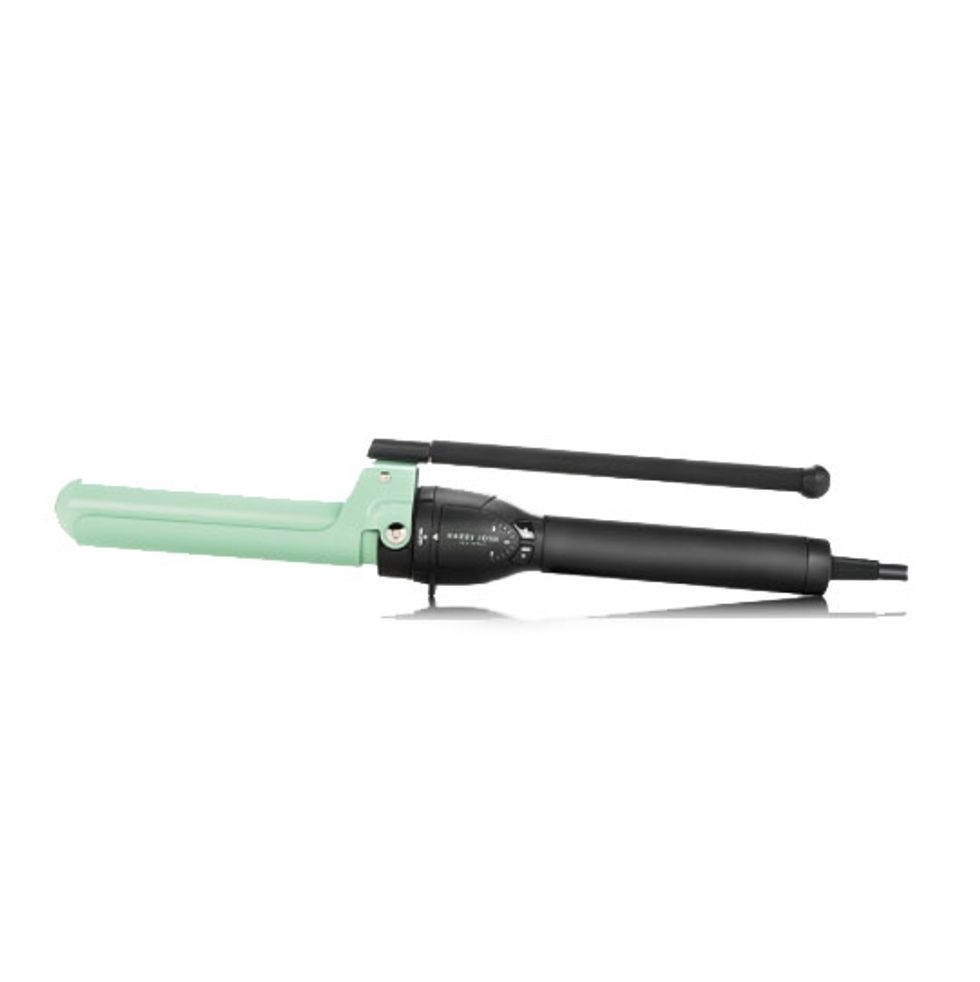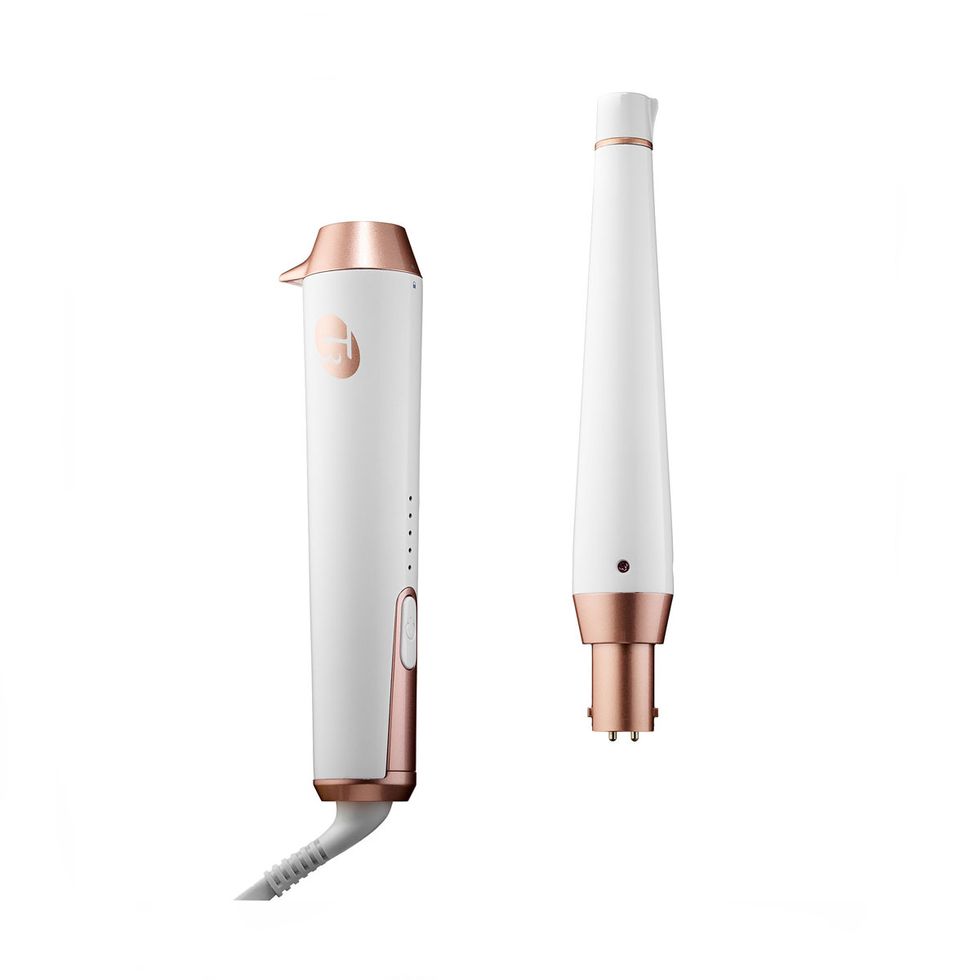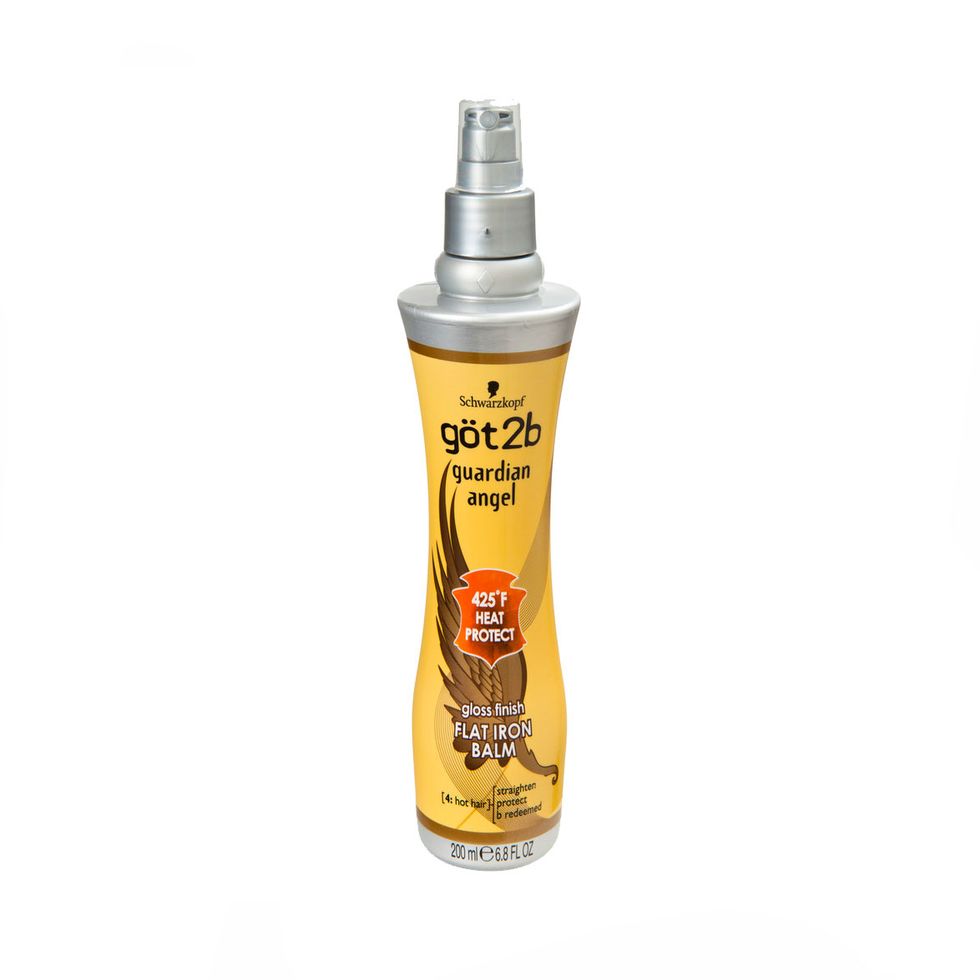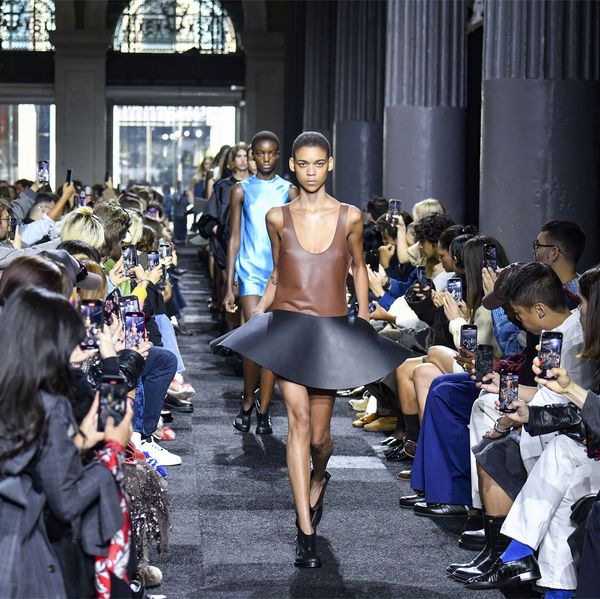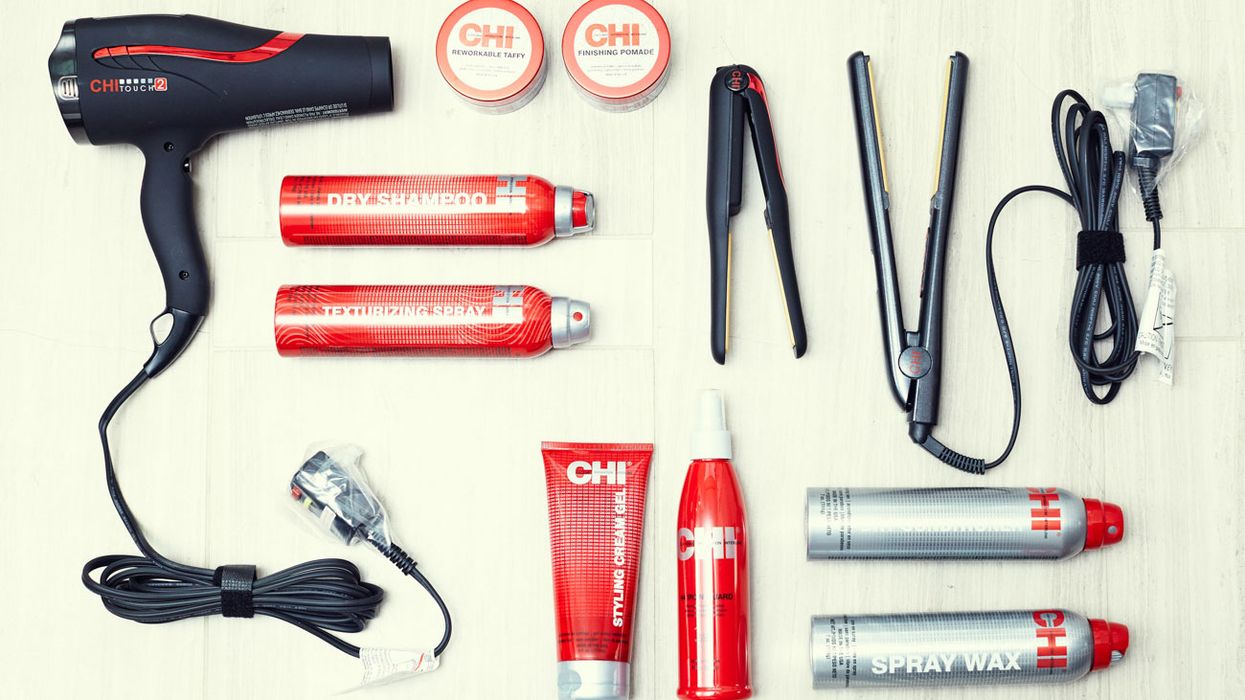
So with the New Year right around the corner and resolutions in mind, we decided to take a more realistic approach to our hair health: rather than cutting out our heat stylers cold-turkey, we’d update our arsenal with the best tools and tricks for our specific hair type, minimizing the damage we’re bound to invoke. And who other than Alexa Chung’s, Lupita Nyong’o’s, and Rosie Huntington-Whiteley’s hair stylists to guide us? Yeah, we thought so, too.
Size: “The bigger the barrel, the softer the wave. Most people find around an inch in diameter works the best. Use larger barrels for longer hair and narrower barrels for shorter hair.”
Damage Control: “To avoid the overuse of hot tools and the related damage, try to give yourself a head start by getting the texture you want as you blow dry. For straight, pull your hair straight as you dry, and for wavy, scrunch it.”
The Favorites: “GHD Tongs and GHD Air Professional Performance Hairdryer.”
Material and Size: “I find that a ceramic iron has a tendency to straighten and smooth hair very well. Usually when waving thick hair, I prefer a 1.25-inch iron made out of ceramic, as it will give the hair a smooth, natural curl that holds. When curling the hair, make sure to take clean, small sections, because if you use too thick of a section it will not hold throughout the day as well.”
The Favorites: “My favorite hot tools for curling and straightening hair are the Harry Josh 2-in-1 Ceramic Marcel Curling Iron (1.25-inch), Harry Josh Ceramic Styling Iron (1.25-inch), Hot Tools Gold Curling Iron (a classic), and I also love ghd’s flat irons.”
COARSE AND CURLY HAIR
Larry Sims
CV: Lupita Nyong’o, Kerry Washington, & Zendaya
Temperature: “Any hot tool that exceeds over 425°F is too high. Anything over 425°F is going to damage your hair from the inside of the cuticle out. You won’t be able to see the damage initially because it’s happening inside the cuticle, but it will eventually fray and become weak, so that’s not the route to go.”
Size: “I like using T3 hot tools because they have a variety of different sizes—probably the largest range I’ve seen for enhancing very tight curl patterns. They have curling irons that are as thin as a pin. The versatility of sizes really helps me out with my clients.”
Material: “I usually like ceramic, but it depends on how coarse or curly your hair is. For softer hair I would go with ceramic, for medium curls I would go for titanium, and I would use tourmaline for the coarsest hair. Tourmaline is able to hold the heat and direct it in the most effective way for coarse or super curly hair. It straightens it out in the best way, giving it a smoother, shinier finish, more so than any other hot tool material.”
Damage Control: “Always use a heat protectant, no matter what. If you can, minimize putting heat on your hair to once a week, and make sure you moisturize your hair in between thermal styling after you shampoo. Curlier and natural hair tends to, at times, be more dry than any other hair type. The tighter the curl, usually the drier the hair, so you want to make sure you use a great conditioner that has a lot of moisturizing agents, as well as using a leave-in conditioner on top of your heat protectant. got2b has a great heat protectant called Guardian Angel. They also have a blowout heat protectant and a flat iron heat protectant.”
The Favorites: “I like using T3 hot tools and flat irons. I love the fact that they don’t go too hot, meaning they cut off at certain temperature, so there’s no way to damage your hair with T3 products.”



